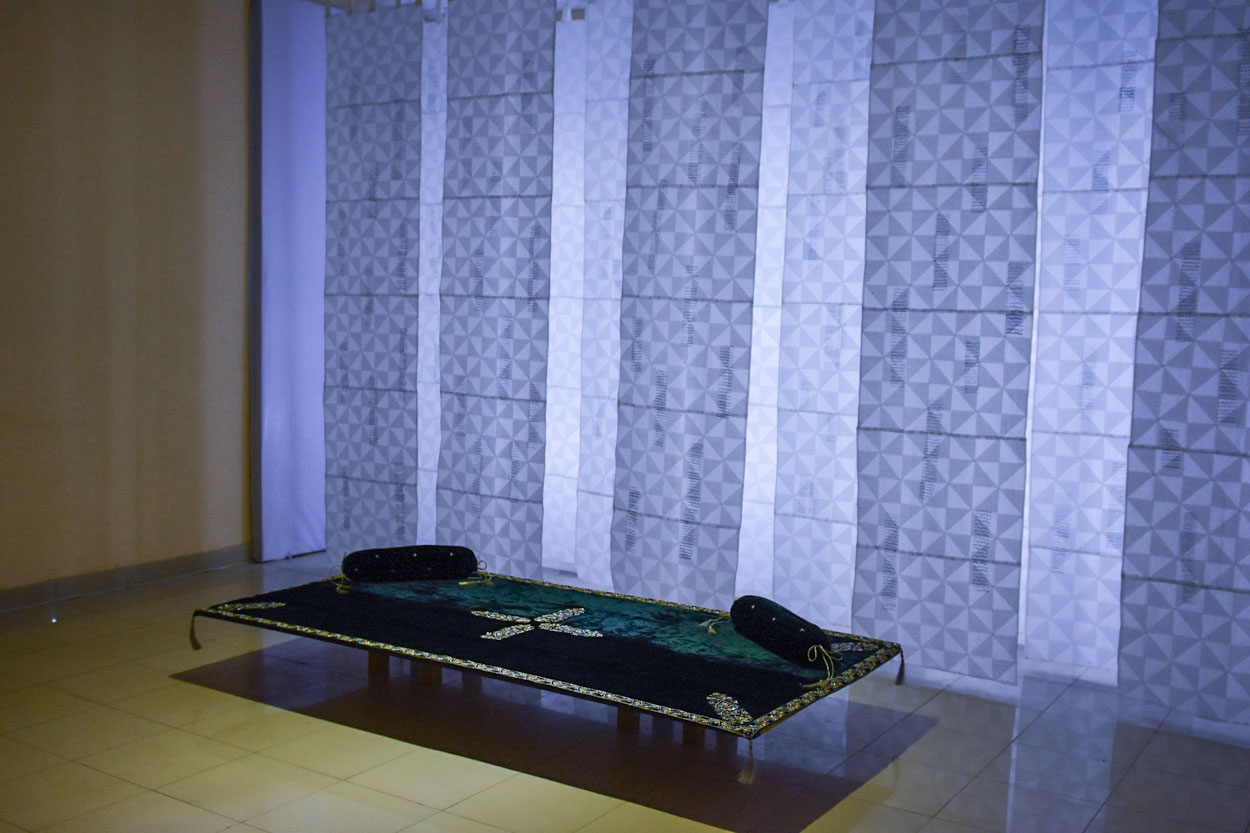Meher Afroz
Born in 1948 in Lucknow (India)
Lives and works in Karachi (Pakistan)
Meher Afroz’s reputation as a prolific printmaker and painter reflects modernity rooted in a traditionalist approach to image-making. Afroz completed her undergraduate studies in fine arts from the Government College of Arts and Crafts, Lucknow, India in 1971. She began her formal art practice in the early ’70s. She has drawn much appreciation and critical acclaim for her printmaking and painting. She is one of the foremost printmakers of her generation. Some of her most important series are The Mask and Puppet, (1988-89), Portrait (1990-91), Amulet (1992-3), Zindaan (2001), Pindaar (2002-3), Dastaavez (2007), Naqsh-bar-Aab (2012), and others. Her career spans a modernist approach that encompasses the abstraction of the picture plane into a layering of the surface, embedded with imagery and text. She was awarded the Pride of Performance by the government of Pakistan in 2015. Afroz co-founded ASNA in 1998, a collective for research, exhibition and dialogue of the local kumbhar, or clay artisan, with the mainstream studio potter/artist. She has taught art at the Indus Valley School of Art and Architecture, Karachi as well as workshops and short-term classes at the Central Institute of Arts and Crafts, Karachi. She has a long list of national and international exhibitions.
Meher Afroz responds to the theme of Witness in an abstract and non-literal manner, reflecting her larger art practice since the 1970s. As one in dialogue with the social through an indirect critique, the artist has constantly been bearing testimony to the value system in her surroundings. The questions that arise out of this dialogue between self and society question the legitimacy of narratives both in and outside the art world. The suspended masnad evokes an enquiry into many levels of witness, and provides a space to seek the physical and spiritual manifestation of its form. Bearing in mind its references in historical text and practices, this is an object of mediation, desire and holds the promise of a reward. The beauty associated with the richness of color and zardozi on textile provides a momentary anchor to reflect on the existing nature of shared spaces, dialogues and their subtext.

Witness as Continuity, 2017.
Mixed media
Dimensions variable
Courtesy the artist

